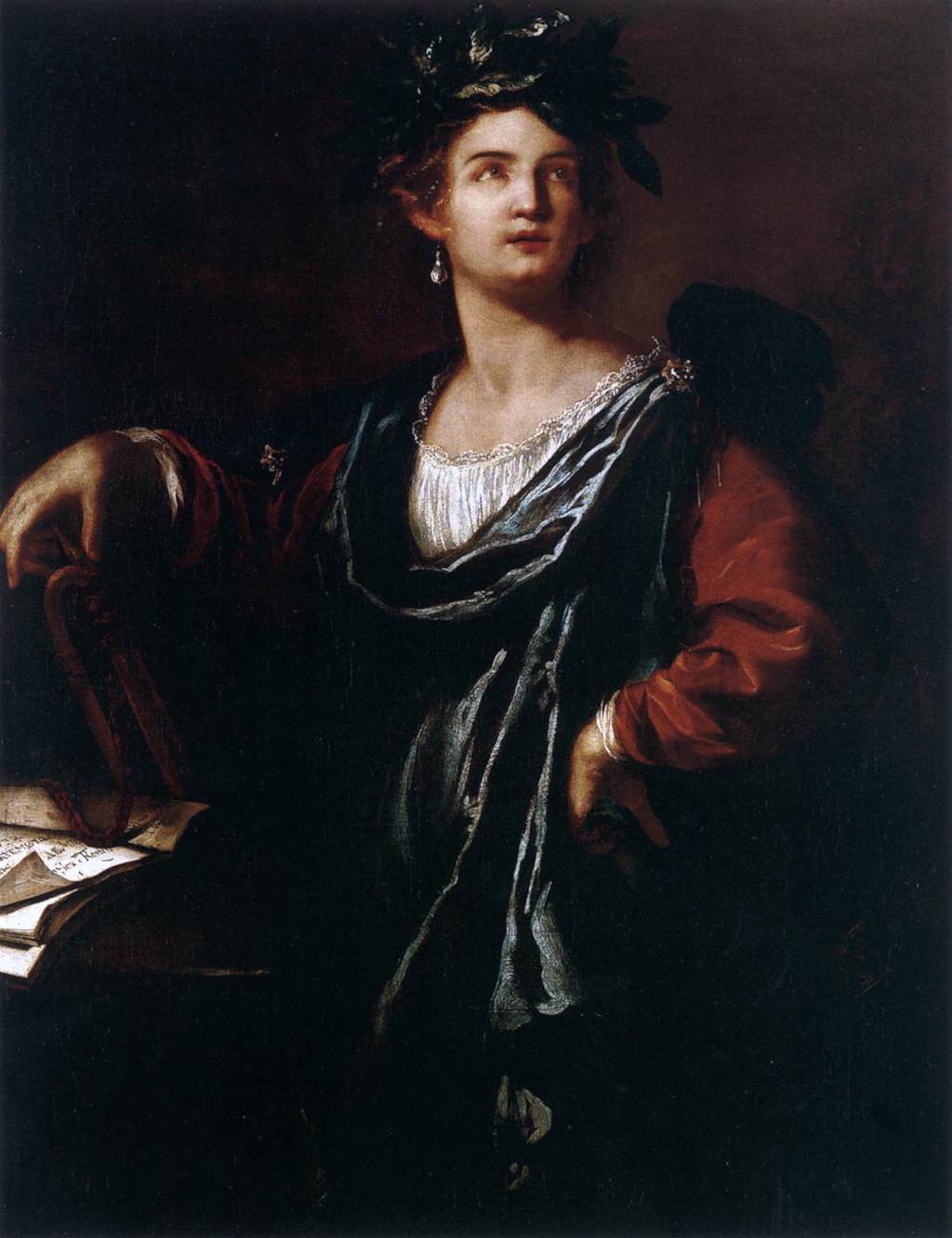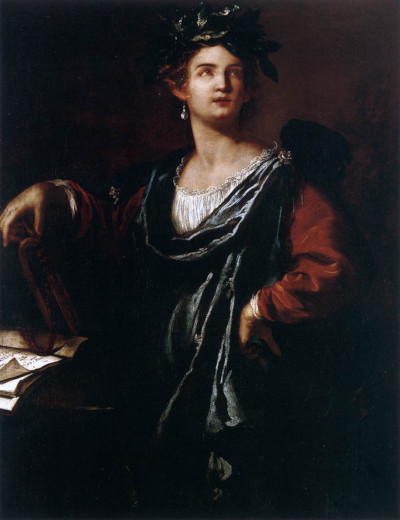Clio, Muse of History came during Artemsia Gentileschi's time living in Naples, which would become a fruitful period in her career. It resides today at the Palazzo Blu in Pisa, Italy.
Artemisia was a well-educated young woman who called upon her knowledge of literature in order to find inspiration for much of her work. Portraiture was a key genre within her oeuvre, and in some cases she would combine her own image with elements of the past. In the example of Clio, Muse of History, we find elements of this theme in objects added to the scene.
The artist would have been in her late thirties at the time of this painting, and had already taken in a number of influences from the different Italian cities in which she had lived. Some have suggested that Clio, Muse of History shows elements of Venetian art, for example.
Description
Clio looks off into the distance, to our right hand side. Her right arm is perched on the arm of a chair or table, whilst her left arm is bent, resting on her hip. The painting is deeper in dark light, in the main, but a small amount appears from the top left of the painting, lighting up the model's facial features, down to her chest.
Some open books reside beside her, clearly a symbolic reference to the identity of this female figure. Layers of black material are draped around her upper half, placed over the top of a white undergarment and red sleeves. She also wears some earrings and a small brooch to hold her robe in place.
The background is left darkened, with no discernable detail appearing from behind the model. This was typical of the artist, and she rarely made use of complex backgrounds, and when she did these were often completed by other artists who specialised in alternative genres.
Symbolism and Self Portraiture
The open book is specifically an object used to represent Clio, Muse of History. In other artistic interpretations, it was also common to use a crown of laurels and a trumpet too. Experts have concluded, by studying lower layers of oil on this painting, that many adjustments were made by the artist and that originally it may have been intended instead to represent fame instead.
Artemisia was a skilled portrait painter who could quite easily adapt the meaning of a painting by altering just a few supporting objects. She may have been aware of Cesere Ripa's Iconologia, and used it as a source of inspiration, with Clio being featured within it. The artwork would disappear from record for many years, before re-appearing in the 1940s in a British collection.
Famous Paintings by Artemisia Gentileschi
The artist produced a wide range of work within her career but was always promoted during her own lifetime as a master of the female portrait. She can be considered a feminist at heart, and would regularly re-imagine historical female figures in positions of power and strength.
In some cases she would even append her own face into some of these scenes, helping to make her a recognisable figure within major Italian cities. In terms of her most famous paintings, some of the best examples include Susanna and the Elders, Self-Portrait as the Allegory of Painting and Self-Portrait as a Lute Player.
Large Image
A larger picture of the original work is included below. This brings out more of the detail added by the artist all those years ago, including the combination of drapery with reflective light, as well as the model's facial features. Having been completed in 1632, this piece marks a mature artist at the height of her powers.
 Clio, Muse of History
Clio, Muse of History




